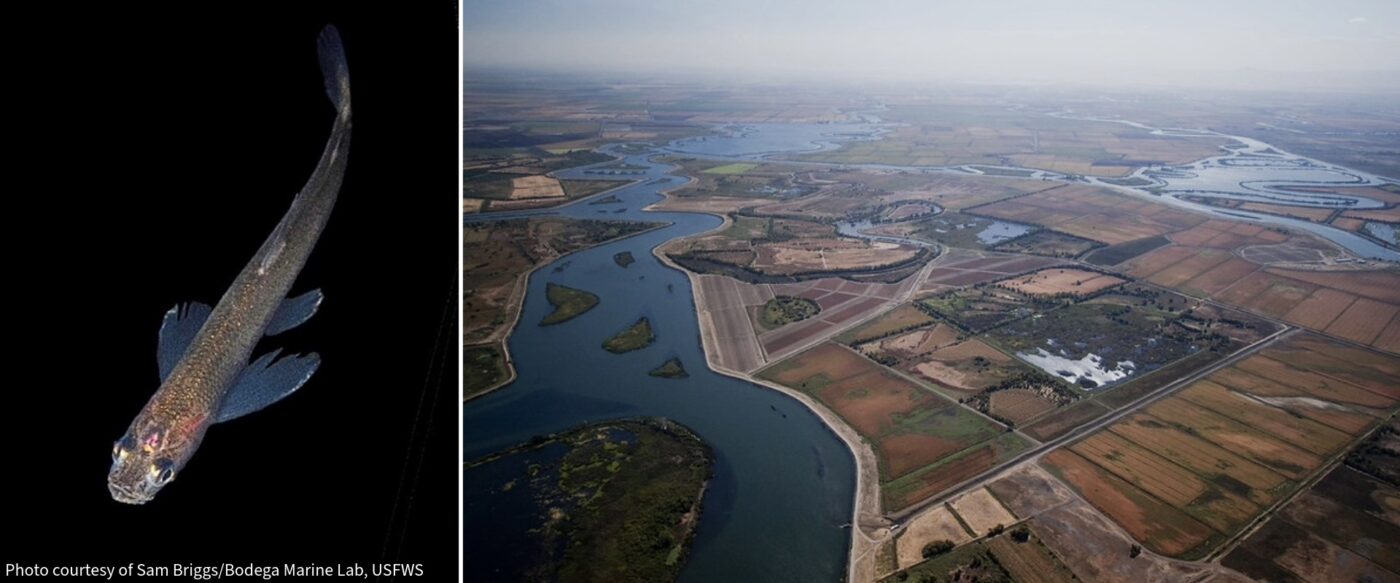Monday November 10, 2025

The rarest species often have the most to gain from tailored management strategies, but they are also the hardest to monitor because so little is known about them. Once abundant, the Bay-Delta population of longfin smelt (Spirinchus thaleichthys) has been steadily declining, a trend revealed by abundance indices and surveys. The decline has been so severe that regulatory agencies now list these smelt as Endangered. With so few remaining individuals, studying them is a challenge. Fortunately, advances in statistical modeling are helping to address these problems. Utilizing spatially dynamic multistate occupancy models, scientists have uncovered new insights into the distribution and abundance of the Bay-Delta longfin smelt population that could lead to more effective management strategies.
This population of longfin smelt move throughout the San Francisco estuary depending on environmental factors, such as the time of year and rainfall, and occupy habitats that range from marine to freshwater. The decline of this population is linked to factors such as low freshwater outflow, competition for food with invasive species, habitat loss, rising temperatures, and higher water clarity. While surveys now collect data on this population, these monitoring programs were not originally designed with Bay-Delta longfin smelt in mind and may overlook key environments that the population relies on.

Historically, management decisions for this population of longfin smelt have relied on information calculated from annual surveys, specifically the index of abundance, which focuses on the number of fish caught per unit of effort. However, reliance on just this metric means that a lot of other data from the surveys were not used (temperature, date, rainfall, etc.). Surveys also indicate that some locations are consistently occupied by smelt while others are not. Additionally, members of this population can be difficult to locate and have been surveyed using various methods, making it challenging to utilize existing data. All of these factors indicate that the index of abundance may not reflect the complex relationships between Bay-Delta longfin smelt and their environment.
To better understand this population of Bay-Delta longfin smelt, scientists used a complex mathematical model known as a spatially dynamic multistate occupancy model. The model allowed scientists to combine data that were not used before from multiple surveys and look at broader patterns across time and space, even when the fish were difficult to detect. Researchers were able to make the most of available data from 11 years of surveys (2011–2021) and 30 different locations (from San Pablo Bay to eastern portions of the Delta). By incorporating these data into the spatially dynamic multistate occupancy model, scientists uncovered new patterns in the Bay-Delta longfin smelt population that were previously overlooked and could better inform management strategies.

Specifically, the study showed that both the time of year and location surveyed significantly influenced if fish were detected. Additionally, certain habitats – such as flat tidal bays – were more likely to support higher numbers of longfin smelt, while areas with woody debris or steep, man-made slopes were less favorable. This suggests that restoring these habitats could be especially effective for supporting local populations. In the face of changing environments, many species and populations, like the Bay-Delta longfin smelt population, stand to benefit from more effective habitat management strategies. This study shows that even when data are sparse or incomplete, more sophisticated statistical models can still reveal meaningful patterns, offering a powerful tool for conservation planning and management.
By incorporating where longfin smelt were found, if they were detected, and numerous environmental variables, researchers uncovered important insights into when and where these fish are most likely to occur and what habitat conditions may support higher local abundance. These findings can guide habitat restoration, shape management priorities, and improve future survey design in the San Francisco estuary. Studying rare species is always challenging, but tools like spatially dynamic multistate occupancy models offer a way to make the most of available data. Applied carefully, these tools can be critical for informing management strategies and decisions, giving the Bay-Delta longfin smelt population a better chance at survival.
This post was featured in our weekly e-newsletter, the Fish Report. You can subscribe to the Fish Report here.
Header Image Caption: Studies on the Bay-Delta longfin smelt population can guide habitat restoration, shape management priorities, and improve future survey design in the San Francisco estuary.
